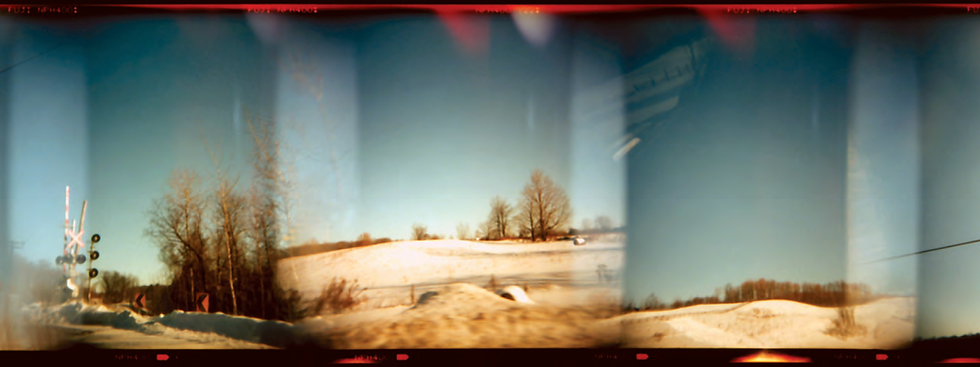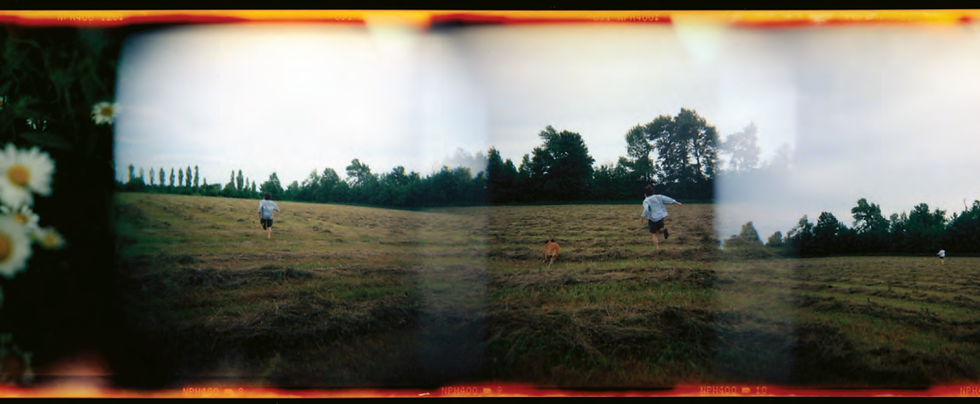Sara Angelucci: UNRAVELLING THE TIMESCAPE
- PhotoED Magazine
- Mar 25, 2017
- 3 min read
Updated: Nov 9, 2019

The Timescape series comprises film strip-like narratives made between 2001 and 2003, marking a particular measure of time and space. Shot on the fly, during a walk, on a train ride, or from a car window, each strip maps a small journey: some a daily routine, others more unusual and of greater significance. Each Timescape, in its own way, seeks to fix a passage of time and place, while at the same time expressing a sense of dislocation and transition.
The photographs in this series were created using a Holga toy camera. I came upon this camera over ten years ago and was fascinated by its modest construction. The camera seemed to harken back to pinhole or other forms of early photography when our tools were simpler. It amazed me that this primitive device made out of plastic, with a plastic lens, could produce images of such beauty. I soon discovered that the Holga had its limitations: lens distortion and light flare among them. However, these qualities seemed to coincide well with something I was seeking to express in my work at the time, something ephemeral and dreamlike.
For many years before making the Timescapes I was working with regular and super 8 film, scrolling the film through a hand-cranked editor and examining the still frames within the story, while embracing them as part of a greater narrative. One day while viewing my Holga negatives, which I had left uncut, I discovered that one of my 120 negative strips seemed to unfold like a film. In re-examining the negatives I had shot over previous years, I realized that a number of them emerged in this cinematic way. With this idea in mind, I began to consciously shoot a roll of film with the awareness of forming a narrative, sensitive to how one frame might speak to the next to create a story.
Working with multiple images expressed a sense of groundlessness that I wanted to communicate. By holding the camera away from my body and shooting as I moved through the landscape, I strove to evoke the feeling of searching for place and identity. As curator Karen Henry wrote about the Timescapes in the exhibition Landscape and Light, “the accumulation of multiple frames reveals an effort to grasp something impossible to hold onto.”

My work is informed by a fascination with the relationship between the still and the moving image: examining how the photographic still is a moment lifted from the flowing stream of time. In exploring this relationship over the years, I have worked simultaneously in photography and video. My work in each has informed the other. My video When the Cricket Sings (2007), shot in Shanghai, depicts a night walk through a shop-crowded street with brightly illuminated interiors. Like the Timescapes, the Cricket video is shot with the camera moving. On this Shanghai street, the video passes steadily along the sidewalk exposing a series of brief vignettes as shoppers buy food, examine electronics, or eat bowls of noodle soup. As the promenade continues, the lit shops are separated by darkness, and the night becomes the black rebate that divides one frame from another in a film or negative strip. In unraveling the Timescapes, it became clear to me that they marked an important passage in my work, linking my love and fascination with the still and the moving image, and foretelling of an ongoing exploration of duration, memory, and narrative.

See more of Sara' work at: www.sara-angelucci.ca
This article originally appeared in PhotoEd Magazine's Winter Issue 2008.






